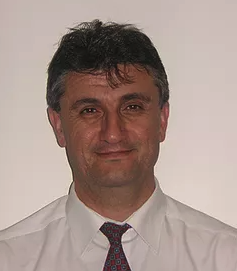
Prof Peter Youssef
Biosimilars are being widely adopted by rheumatologists in Australia, according to figures on etanercept use sourced from the OPAL dataset.
Findings presented at the ARA 2021 meeting by Professor Peter Youssef of Sydney University showed that in 2020, 46% of patients with rheumatoid arthritis commencing etanercept in any line of therapy were prescribed the biosimilar.
An analysis based on de-identified clinical data from 111 rheumatologists in Australia also showed that by 2020, 50% of b/tsDMARD naïve patients commencing etanercept were being prescribed the biosimilar.
The study was based on OPAL data for 23,331 patients with RA, PsA or AS treated with a b/tsDMARD since January 2007, of whom 3,984 patients had received etanercept by December 2020.
Biosimilar initiations increased each year, with 9%, 33%, 46% and 42% of etanercept initiations being the biosimilar in 2017, 2018, 2019 and 2020, respectively.
For patients with PsA and AS commencing etanercept, 27% and 44% were prescribed the biosimilar, respectively.
Professor Peter Youssef, a rheumatologist at Royal Prince Alfred Hospital, Sydney and board member of OPAL Rheumatology, said the study was in part a test of government’s efforts to encouraging clinicians to consider the biosimilar Brenzys, introduced in April 2017. The federal health department’s biosimilar uptake driver incentives have included the use of streamlined script authorisation process.
Professor Youssef said that allowing clinicians to write scripts for patients upon their second repeat, instead of the former process involving a computer upload through PRODA and having scripts sent through the postal service, had been well appreciated.
“Particularly when patients have had to travel a distance to see you, they like to be able to take a script home with them,” he told the limbic. Anecdotally, there was also a view that the biosimilar pen was easy to use.
The evidence of broad take-up was interesting in view of the fact that there had been some resistance among clinicians to nudges from authorities, he added.
“There was a feeling among some rheumatologists that they didn’t like being dictated to,” he said.
Professor Youssef said he was particularly keen for further analysis of the OPAL data to measure the extent of any crossover between the biosimilar and originator drugs.
“Further investigations are required to determine the long-term clinical outcomes of patients treated with originator vs. biosimilar bDMARDs in the real-world Australian setting,” the study investigators suggested.